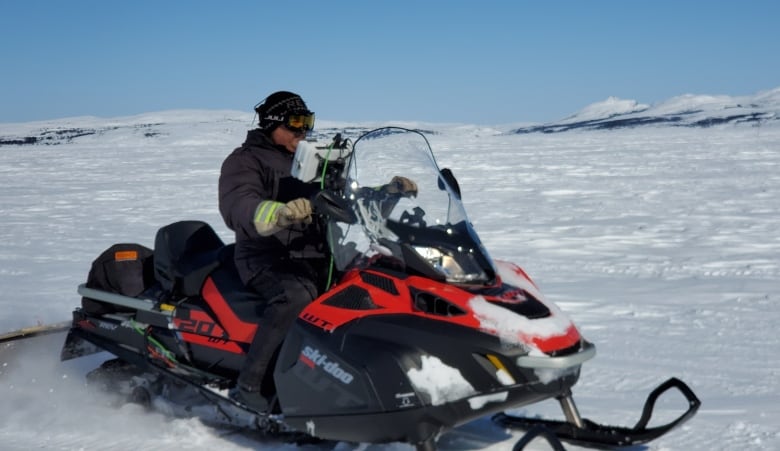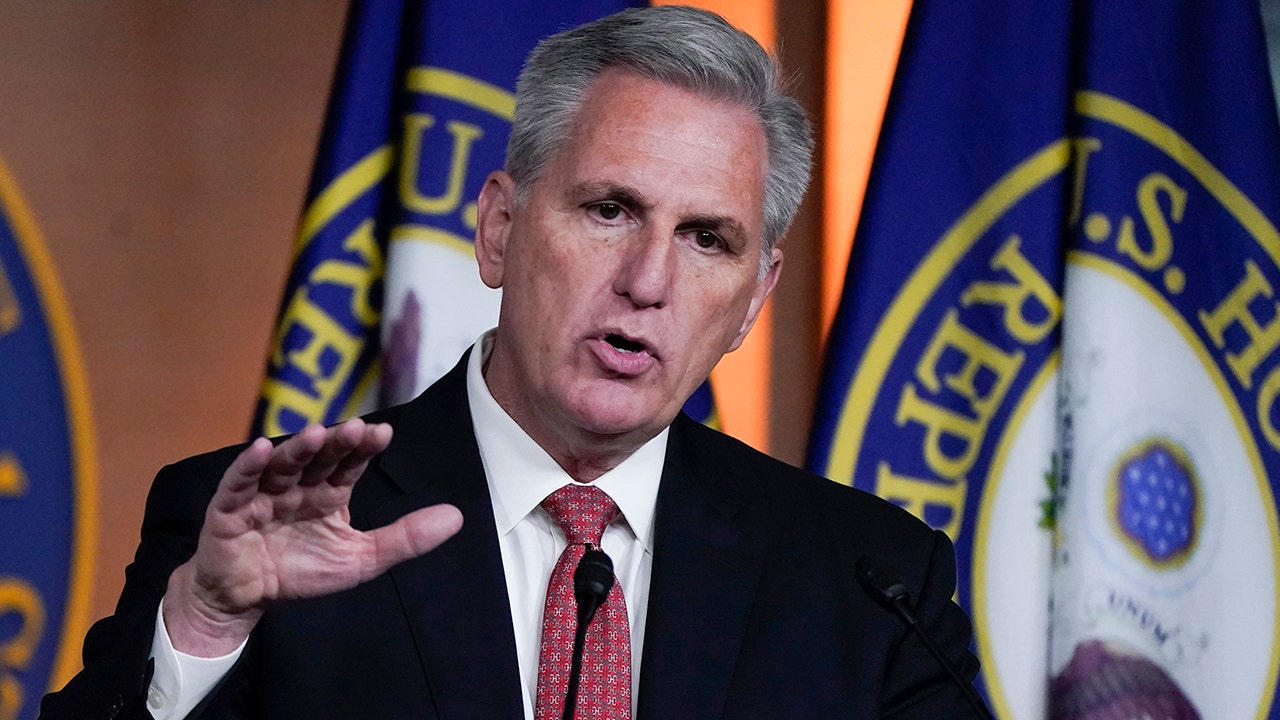Weather stations are sparse in Labrador. The gaps can be a matter of ‘life or death’
What On Earth17:15Climate change means gaps in weather data a matter of ‘life or death’, say people in northern Canada
Researchers, residents and elected officials in Labrador say gaps in weather data in northern Canada are negatively impacting everything from hunting, to health, to the ability to prepare for the accelerating effects of climate change.
“We used to have a better climate observing network in the north than we do today,” said Robert Way, an assistant professor of geography at Queens University.
Way told CBC’s What On Earth that compared to 20 years ago, there are fewer stations across Canada collecting information about all four key weather variables: precipitation, snow depth, air temperature and wind speed.
Since there can be hundreds of kilometres between weather stations in northern Canada, he said, many small communities lack accurate information about the weather, which can be dangerous for people travelling on the land.
“I don’t want to make it dire and say it can be life or death, but it actually can,” he said.
Offering examples from his home community in central Labrador, Way said not having accurate information about temperature means more uncertainty about whether sea ice is safe for travel. In the warmer months, he said, information about wind speed and direction is critical to the safety of people travelling by boat.
CBC Radio contacted Environment and Climate Change Canada, but it would not provide numbers about how many weather stations it currently operates in the North.
Chaim Andersen, community climate change liaison with the Nunatsiavut government in Nain, Labrador, said that, for generations, Inuit have passed on traditional knowledge that allow them to make predictions about the weather. The warming climate has changed that, she said.
“There’s still that Inuit knowledge aspect and people are still very much able to see if there’s bad ice or know when bad weather is coming,” she said. “However, it’s becoming unpredictable and that poses a lot of risk to communities.”
Gaps in weather data also affect air travel to remote communities, said Way.
Cancelled flights
“When there’s a lack of reliable meteorological observations in those areas, you have operators of these aircraft having to make decisions to, say, cancel flights because they don’t know what’s going on in the community,” he said.
Many northern routes are already challenging to fly because of rudimentary airport infrastructure, said Philip Earle, vice president of Labrador-based airline Air Borealis. But he said changing weather patterns are adding to the difficulties of keeping flights on schedule.

Air Borealis, which transports passengers, medical patients, and food in Labrador, uses data produced at two weather stations run by NAV Canada, and two weather cameras along its route for real time weather information. But as climate change alters precipitation and wind patterns, Earle said there’s a greater need for consistent, uniform weather monitoring at all small airports in the north.
“Sometimes, because of the lack of real weather information, not having access to that detail means that a flight remains on weather hold for safety reasons, where in actual fact we may have been able to operate a flight,” he said.
“We have seen some improvements, but I believe that the pace of which climate change is happening, we’re not keeping up.”
Hampers food supply
The town of Nain, Labrador, lacks year-round road access. Resident Rex Holwell said sometimes flights won’t make it to there for two or three weeks.
“The stores [get] pretty bare on fresh stuff … eggs and milk and bread. So you’re trying to stretch it out, but so is everybody else,” he said.
Holwell, who is the manager of Nunatsiavut Operations for SmartICE — which combines traditional knowledge with technology to help people make more informed decisions about whether to travel on sea ice — said the impacts of climate change have made hunting and fishing more difficult as well.

“The ice season is happening later and later now. A lot of people aren’t feeling safe on the sea ice,” he said, noting that when the ice is thick enough hunters can fish for char or hunt a seal for the cost of a tank of gas in their snowmobiles.
The effect of climate change on hunting, he said, has a cost-of-living impact, a cultural impact, and makes food deliveries by air all the more important.
Medical travel delays
Lela Evans, member of the House of Assembly representing the district of Torngat Mountains in Labrador, said her constituents rely on flights to Happy Valley-Goose Bay for medical testing and treatment because communities in her area have no doctors.
“A lot of times we have people be … weather delayed for five to seven days,” she said.
As a result, she said, medical travellers sometimes delay their trips when the forecast is bad, which can have serious health impacts. But if they do travel for treatment and are unable to return home to their families in a timely manner, she said, that has a mental health impact.

Evans also said northern Canada needs more on-the-ground weather data to prepare for climate change.
“It’s about making sure we have an accurate baseline,” said Evans. “You can’t understand that change is happening if you don’t have accurate data.”
Robert Way concurs. “As the impacts of climate change are undoubtedly going to be far greater in the north than they will be in other areas, it seems like quite a noticeable gap,” he said.
Bringing more stations online
Since 2019, the federal government has given Way funding to install six weather observing stations in Labrador, with a seventh planned in the coming months.
Way said other northern communities have set up their own stations as well.
“A lot of communities are leading this effort themselves. People would be surprised just how many efforts are coming up across Canada,” he said.
But he said not much data from those community stations is included in Environment Canada’s forecasts.

In a statement emailed to CBC Radio, Environment and Climate Change Canada said data from approximately 90 weather stations operated by territorial network operators in the Northwest Territories and Yukon have already been integrated into ECCC systems, and that the ministry is assessing whether including data from more community stations could improve its weather forecasting.
Way said weather radar technology, which helps meteorologists track precipitation and predict extreme weather, would also improve accuracy of forecasts in northern Canada, but currently the equipment only exists in the southern part of the country.
Environment and Climate Change Canada said it sees “little justification” to add weather radar to the North right now because it would be expensive to operate and maintain. It also said radar would be of “limited usefulness” due to the nature of Arctic weather systems, which often include blowing snow, fog, ice fog, drizzle and low cloud ceilings, none of which can be detected by weather radar.
The ministry said the most useful forecasting tools for the north are high-resolution computer models, for which it gathers information from satellites, aircraft and weather balloons. The ministry is also planning to install new infrastructure to gather satellite data in several provinces and territories over the coming three years.
But Way said satellite data and models don’t provide people with the real time information they need, noting also that radar coverage in Alaska helps improve the accuracy of Canadian weather forecasts.
“I continue to be astounded that we lack weather radar coverage across huge swaths of the north,” he said. “The difference it would make for even airline travel, especially to remote communities … it’s kind of hard to quantify how much value that would be.”




